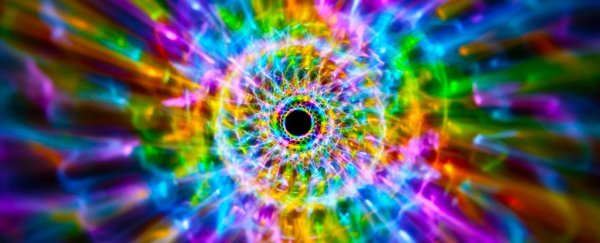Clinical Trial on Corona Virus Vaccine
Chronic Pain Could Have a Unique Genetic Basis in Women

A sweeping meta-analysis of data from the United Kingdom Biobank has found a different genetic basis for chronic pain in women compared to men.
The results are still preliminary, but to date, this is one of the largest genetic studies on chronic pain to analyze the female and male sex separately.
“Our study highlights the importance of considering sex as a biological variable and showed subtle but interesting sex differences in the genetics of chronic pain,” says population geneticist Keira Johnston from the University of Glasgow in Scotland.
Chronic pain conditions are among the most prevalent, disabling, and expensive conditions in public health. In the United States, chronic pain affects more people than heart disease, diabetes, and cancer combined, and yet it receives a fraction of the overall funding.
Even when studies are done, they often overlook underlying sex differences, and that’s a huge and detrimental oversight. Compared to men, women are far more likely to develop multiple chronic pain disorders, and yet historically, 80 percent of all pain studies have been conducted on male mice or male humans. This means we know very little about how and why females are suffering more and what treatments can help them best.
While there are probably multiple biological and psychosocial processes in this sex discrepancy, the current genome-wide study suggests there’s a genetic factor in the mix, too.
Comparing gene variants associated with chronic pain in 209,093 women and 178,556 men from the UK Biobank, researchers have attempted to find at least part of the answer in our biology. https://a631648b1b2b68c789dcd6899db2a63e.safeframe.googlesyndication.com/safeframe/1-0-38/html/container.html
In the end, researchers found 31 genes associated with chronic pain in women and 37 genes associated with chronic pain in men with barely any overlap. The authors admit some of the differences here might stem from their lower male sample size, but the results are nonetheless intriguing.
When researchers tested the expression of all these genetic variants across various tissues from mice and humans, they noticed the vast majority were active in a cluster of nerves within the spinal cord, known as the dorsal root ganglion, which transmits messages from the body to the brain.
Several genes in the male-only or female-only list were associated with psychiatric issues or immune function, but only one gene, known as DCC, was in both lists.
DCC encodes for a receptor that binds with a protein crucial for the development of the nervous system, especially the dopaminergic system; as well as being a reward center, the latter has recently been connected to pain modulation in the body.
DCC is also thought to be a risk gene for the pathology of depression, and DCC mutations appear in those with congenital mirror movement disorder, which results in movements on one side of the body being replicated on the other side. https://a631648b1b2b68c789dcd6899db2a63e.safeframe.googlesyndication.com/safeframe/1-0-38/html/container.html
How exactly DCC is connected to chronic pain remains unclear, but the authors say their results support several theories “of strong nervous system and immune involvement in chronic pain in both sexes”, which they hope will be used to develop better treatments in the future.
If chronic pain is more strongly associated with immune function in women, for instance, the side-effects of immune-targeting drugs may be very different to men. On the other hand, treatments such as chronic opioid use might also have different outcomes. Opioids are known to adversely affect immune function, which suggests they could make things worse and not better for women in chronic pain.
For right now at least, these are just ideas. Way more pain research needs to be done and far more of it needs to be conducted among women before we can really begin to understand the real sex discrepancies at play and what we can do about it.
“All of these lines of evidence, together, suggest putative central and peripheral neuronal roles for some of these genes, many of which have not been historically well studied in the field of chronic pain,” the authors conclude.
The study was published in PLOS Genetics.
Source : 1
DCGI directs SLAs to monitor availability of remdesivir injections & prevent its hoarding
The Drugs Controller General of India (DCGI) has directed all State Licensing Authorities (SLAs) to monitor availability of remdesivir injections to ensure its supply and also take timely action to prevent its hoarding and black marketing.
“It has been brought to the notice of union health ministry that in Mumbai and Thane region in the state of Maharashtra, Bhopal, Indore and Gwalior in the state of Madhya Pradesh and Ahmedabad, Surat and Rajkot in the state of Gujarat are reporting shortage of remdesivir injections. In view of the same, SLAs are supposed to initiate immediate remedial action to ensure supply of remdesivir injections to public and private hospitals,” the DCGI said in his directive to the SLAs.
SLAs are also requested to instruct the enforcement staff to keep continuous monitoring on the situation and keep strict vigil to ensure availability of remdesivir and also prevent its hoarding and black marketing. Action taken in the matter may be intimated to the DCGI office at the earliest, the DCGI notice further stated.
To curb hoarding and black marketing of remdesivir injection, the Maharashtra Food and Drug Administration (FDA) has recently directed Covid-19 drug remdesivir manufacturers to reduce the wholesale price of the drug and has also proposed to the National Pharmaceutical Pricing Authority (NPPA) to bring it under price control.
Maharashtra FDA Commissioner held a meeting with senior officials at Mumbai headquarters recently to discuss how to reduce this huge gap between the wholesale selling price and MRP of remedesivir injection and how to make this drug available to the patients at reasonable rates.
The Maharashtra FDA is regularly reviewing the availability of remdesivir injection and other drugs in the state. Currently, there are 6 major manufacturers of remdesivir injection 100 mg available in the market.
Based on the review, Maharashtra FDA found out that the maximum retail price of remdesivir manufactured by respective manufacturers like Cipla is Rs. 4,000, Zydus Healthcare is Rs. 2,800, Hetero Healthcare is Rs. 5,400, Dr. Reddy’s Lab is Rs. 5,400, Mylan is Rs. 4,800 and Jubilant is Rs. 4,700.
However, it has been found that the drug was supplied to wholesalers and hospitals at a price of Rs. 800 to Rs. 1,200. In this case, there is an outcry from various quarters about the financial burden being imposed on the patient by the increased maximum retail price (MRP).
Rajendra Shingane, Maharashtra FDA Minister and Saurabh Vijay, secretary, department of medical education and drugs, Maharashtra had also directed to take action in this regard.
Source : 1
How to Spot Blood Clot Symptoms, And What to Do About It

Blood clots are an extremely rare but serious side effect of AstraZeneca’s COVID-19 vaccine, regulators announced on Wednesday.
The benefits of AstraZeneca’s vaccine still outweigh the risks, the European Medicines Agency (EMA) said in a press release. Still, the agency’s safety committee said it’s important to know the signs of a possible clot.
A blood clot occurs when the blood thickens and forms a semi-solid mass. It can be a helpful response to stop bleeding in the case of injury, but these blockages can cause problems if they cut off blood flow to a vital area.
Blood clots can cause blockages in the legs, abdomen, and lungs. Most of the blood clots associated with the AstraZeneca vaccine have occurred in veins in people’s brains.
These clots, known as cerebral venous sinus thrombosis (CVST), can lead to stroke, seizures, and death.
So far, most of the clots reported have occurred in women under 60 years of age within two weeks of vaccination.
Since young people are more likely to experience this side effect, UK vaccine regulators recommend that people under 30 do not get the AstraZeneca shot unless they’ve already received their first dose.
Blood clot symptoms include shortness of breath and headaches
The EMA said patients who got the AstraZeneca vaccine should seek medical assistance immediately if they have the following symptoms:
- shortness of breath
- chest pain
- swelling in your leg
- persistent abdominal (belly) pain
- neurological symptoms, including severe and persistent headaches or blurred vision
Some mild side effects, like pain at the injection site or other body aches, are common in the days post-vaccine.
But if you experience severe or persistent symptoms around four to 20 days after vaccination, you should seek medical attention, according to the World Health Organization.
Blood clots are typically treated with anti-clotting medication. Complications can be avoided if the clot is caught early.
This article was originally published by Business Insider.
Source : 1
Need integrated approach of healthcare professionals: IMA
The Indian Medical Association (IMA) has stated that it needs integrated approach of healthcare professionals of each system contribute to the needs of each person with their expertise in a collective way.
“However to achieve this if it is expected of a single doctor to provide all the good of each system it will produce counter effect and dampen the quality of health care. Hence to achieve the fairer, healthier world for everyone, we need to develop each system professionals as puritan and devise a healthcare delivery system as an integrated approach and not mixopathy,” the association stated.
The IMA’s theme for this year is “Building a fairer, healthier world for everyone.” A healthy living revolves around keeping both physical and mental health in balance.
IMA believes that mixopathy is not an option for achieving accessible and affordable healthcare and resolve to fight against it, but respect and support all other systems of medicine.
“IMA pleaded to the Government of India, calling for action to eliminate health inequities, as part of a year-long global campaign to bring people together to build a fairer, healthier world to establish more medical colleges in needy rural and difficult areas of our country and enhance manpower of each system, create national cadet of doctors who are willing to serve in any part of country, enhance coordinated research to bring out the hidden treasures of our Vedic literature and traditional medicine, create purity of professional system with integrated approach to ensure parity in delivery and say no to mixopathy, work towards building safe and healthy environment, promote healthy lifestyle and control of alcohol, tobacco and drug menace,” the IMA stated IMA commit and dedicate with fraternity involvements and support of ministry of health to achieve the WHO’s constitutional principle that “the enjoyment of the highest attainable standard of health is one of the fundamental rights of every human being without distinction of race, religion, political belief, economic or social condition,” stated Dr J A Jayalal, national president, IMA.
IMA stated that India is producing 86,000 modern medicine doctors every year from 536 medical colleges and have more than 13 lakhs doctors at par with the WHO requirement.
The association added, “Besides, we have 7.5 lakh Ayurveda doctors to provide quality health care to our population. However due to skewed distribution, lack of associated man power of allied health care professionals and infrastructure we are still striving to reach universal quality health coverage . There is no short cut solution for this and it is not fair to divide the people as urban or rural and offer compromised health delivery system to rural India.”
The IMA submitted the list 1,000 doctors of modern medicine to serve in any part of the country as and when required by the government of India under the norms and stipulation of Central government.
Source : 1
Scientists Have Induced Hallucination-Like States in Mice to Study Psychosis

When you try to hear someone talking in a noisy crowd, your brain helps out by filling in what you missed, based on expectations built from past experiences.
Our brains can sometimes get it hilariously wrong, but generally this system is pretty good at keeping you up to speed. Now, it looks like this system might also be involved in hallucinations.
A new study has suggested hallucinations arise when our brains start believing this system of expectations over – rather than just in support of – what our senses are telling us. While this can happen occasionally to anyone, at their extremes, hallucinations are symptoms of serious mental illnesses such as schizophrenia or bipolar disorder.
To figure out how our brains create this glitch, neuroscientist Katharina Schmack from Cold Spring Harbor Laboratory and colleagues developed a model of hallucinations in mice – a challenging task seeing you can’t ask rodents what they’re experiencing.
“Right now, we’re failing people with serious psychiatric conditions. The prognosis for psychotic patients has not substantially improved over the past decades, and that’s because we don’t really understand the neurobiology of the disease,” explained Washington University neuroscientist Adam Kepecs.
“Animal models have driven advances in every other field of biomedicine. We’re not going to make progress in treating psychiatric illnesses until we have a good way to model them in animals.”
So clearly, an animal model is much needed, but it also should be applied with caution. As with physiological studies relying on animal models, we need a thorough understanding of their limitations, such as how they, their development, and their environmental conditions differ from us, as well as how they’re similar, to be able to draw sound inferences. https://88946ebd7f2d4a7bdd1e5e3077287d33.safeframe.googlesyndication.com/safeframe/1-0-38/html/container.html
The researchers dealt with some of these factors by also making direct comparisons with human subjects during their tests.
Human volunteers and mice were presented with a computerized task of detecting a tone within a background of noise. Humans indicated if they heard the tone by clicking one of two buttons, and the mice had been trained to respond to the tone by poking their head into one port if they heard it, or the other port if they did not.
Out of the 220 human volunteers, those who self-reportedly experienced hallucinations (measured by a questionnaire for evaluating psychiatric symptoms) were more likely to detect the tone when it wasn’t there with high confidence – a hallucination-like event.
When the mice were given a known hallucinogen – ketamine – they were also more likely to hear the tone when it wasn’t there with greater confidence, which was measured by how long they were willing to wait for a reward.
The team could also prime the mice to confidently falsely detect this tone more frequently, by playing the tone more often, therefore increasing their expectation of hearing the tone. This also happens with humans. https://88946ebd7f2d4a7bdd1e5e3077287d33.safeframe.googlesyndication.com/safeframe/1-0-38/html/container.html
Monitoring the mice’s brains, the researchers detected elevated levels of dopamine before they falsely heard the tone – a chemical known to play a role in human hallucinations. The team then demonstrated that boosting dopamine levels caused the hallucination-like events in the mice more often, and that they could be reduced by an antipsychotic drug that blocks dopamine.
“There seems to be a neural circuit in the brain that balances prior beliefs and evidence, and the higher the baseline level of dopamine, the more you rely on your prior beliefs,” Kepecs explained. “We think that hallucinations occur when this neural circuit gets unbalanced, and antipsychotics rebalance it.”https://platform.twitter.com/embed/Tweet.html?dnt=false&embedId=twitter-widget-0&features=eyJ0ZndfZXhwZXJpbWVudHNfY29va2llX2V4cGlyYXRpb24iOnsiYnVja2V0IjoxMjA5NjAwLCJ2ZXJzaW9uIjpudWxsfSwidGZ3X2hvcml6b25fdHdlZXRfZW1iZWRfOTU1NSI6eyJidWNrZXQiOiJodGUiLCJ2ZXJzaW9uIjpudWxsfX0%3D&frame=false&hideCard=false&hideThread=true&id=1377686730908766212&lang=en-gb&origin=https%3A%2F%2Fwww.sciencealert.com%2Fscientists-have-induced-hallucination-like-states-in-mice-to-study-psychosis&sessionId=ae63dd659fab2d9f171b02a5d98f7e36246fccd5&siteScreenName=ScienceAlert&theme=light&widgetsVersion=1ead0c7%3A1617660954974&width=550px
Of course Schmack and colleagues don’t know for sure yet if the hallucination-like event they induced in the mice and humans overlaps in neurobiology with the spontaneous hallucinations healthy people report experiencing – or those experienced during psychotic episodes.
But the system they have now developed will hopefully allow researchers to further investigate these questions, as well as search for new treatments for psychotic disorders.
“We are very excited about this computational approach to study hallucinations across species that enables us to finally probe the neurobiological roots of this mysterious experience,” said Kepecs.
This research was published in Science.
Source : 1